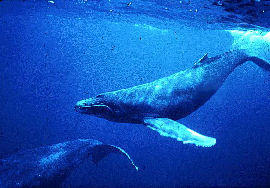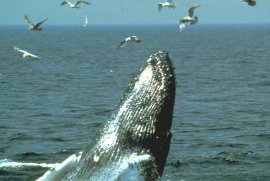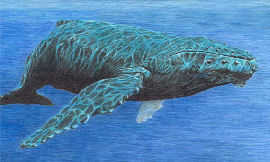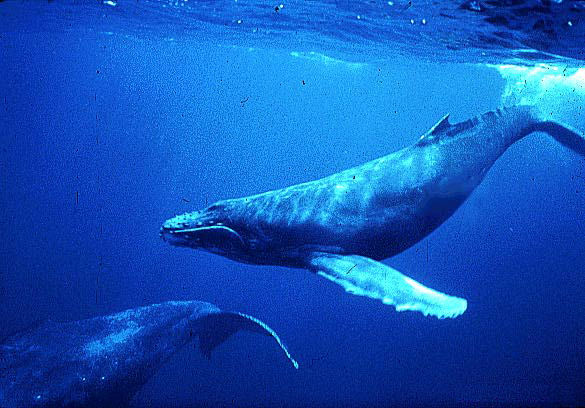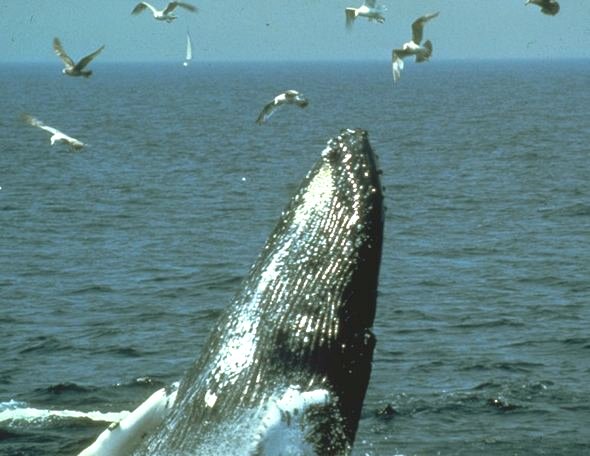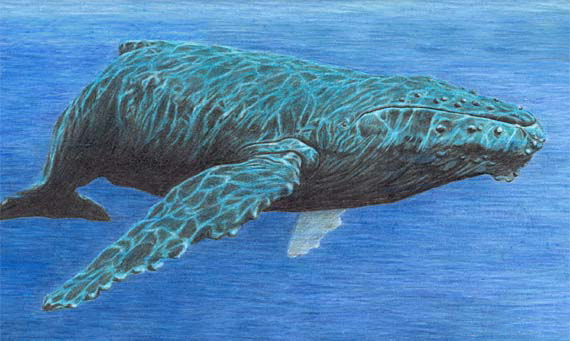Marine Mammals
Description
To 53' (16.2 m). Robust, narrowing rapidly to tail; mostly black, belly sometimes white, flippers and underside of flukes nearly all white, baleen plates black with black or olive-black bristle. Top of head and lower jaw with string of fleshy knobs or protuberances randomly distributed; paired blowholes on top of head; distinctive, rounded projection on tip of lower jaw. Flippers very long, front edges scalloped. Dorsal fin small, variably shaped, placed on small hump slightly more than two-thirds of way back from head. Flukes deeply notched, concave, rear edges scalloped. Blow wide, balloon-shaped.
Discussion
The median rostral ridges are not as obvious in the Humpback Whale as in other members of the family. Humpback Whales migrate seasonally and feed on krill and small schooling fishes. They are known to concentrate the food by forming a bubble curtain, created by releasing air bubble curtain, created by releasing air bubbles while swimming in a circle beneath the water surface. Humpback Whales often "sing," vocalizing a long series of repeated phrases; the vocal patterns are apparently specific to separate populations of whales but may vary from year to year. It is possible that individual animals can be recognized by some of their sounds. Humpbacks sometimes leap clear of the water and may be seen slapping their flukes or a flipper on the surface.

